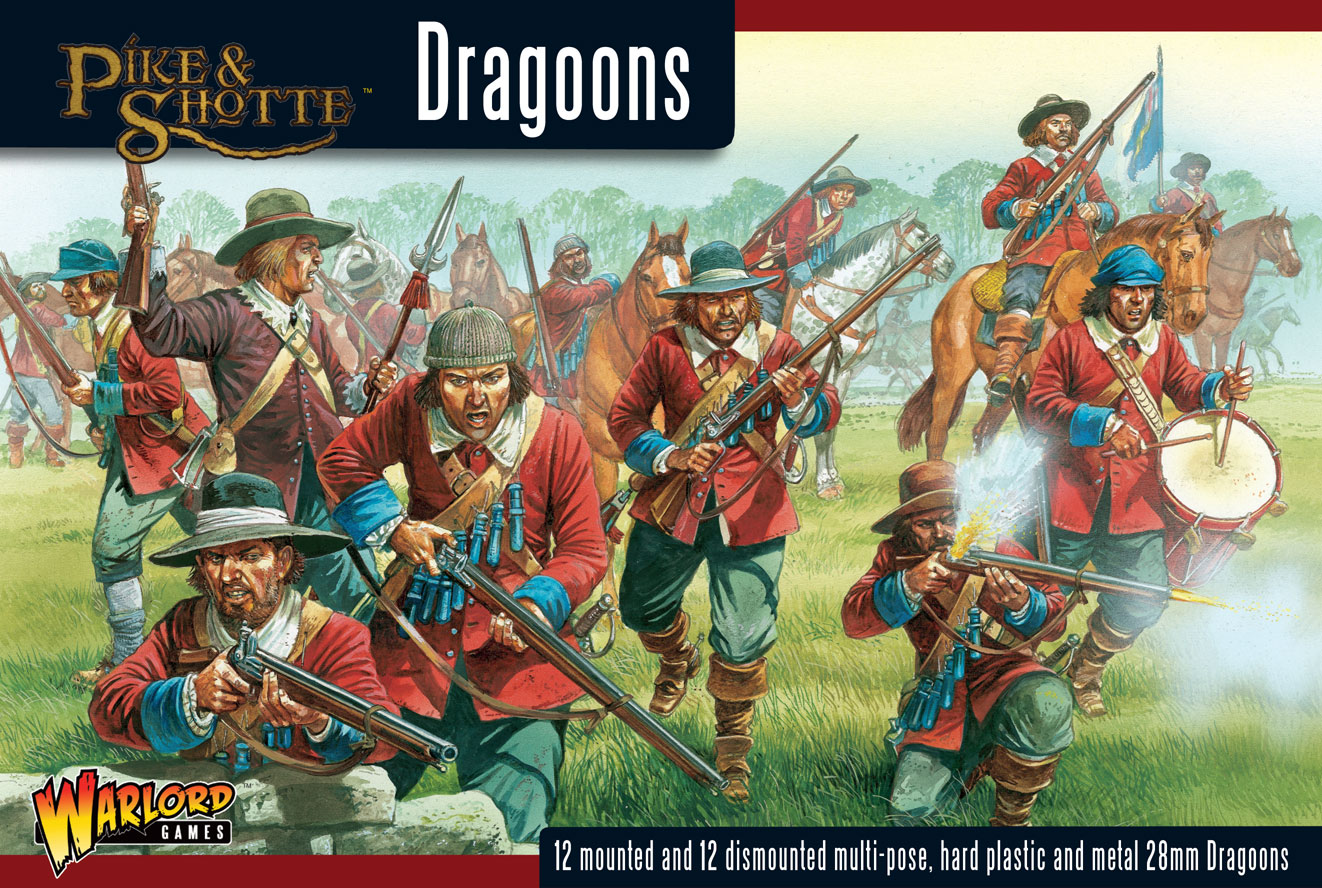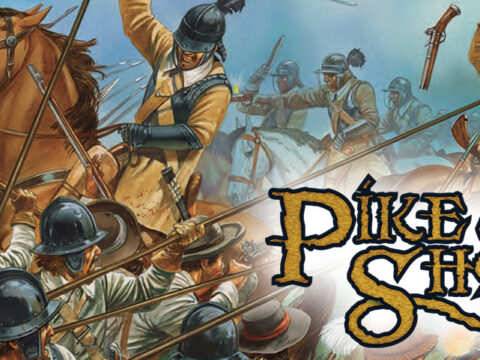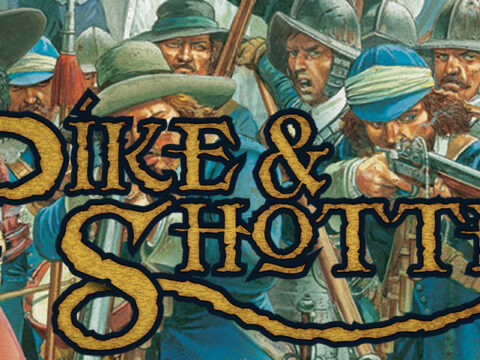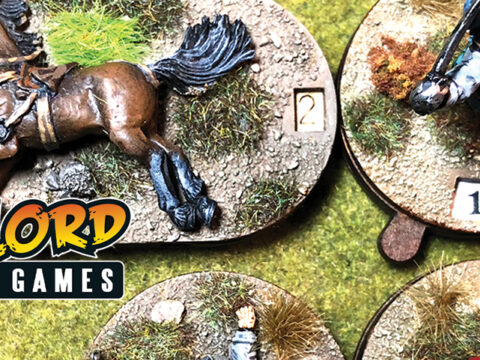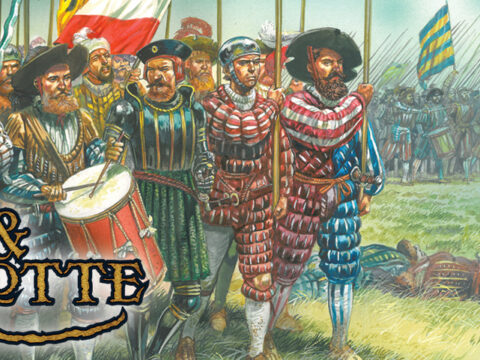The role of the Dragoon was still being defined in the wars of the 17th century. Dragoons later went on to become heavy shock cavalry who rarely got off their expensive horses. Our subjects fighting in the English Civil Wars and Thirty Years War are really mounted infantry, musketeers mounted on poorer quality horses. Their role was not glamorous but was nonetheless vital to a 17th century general.
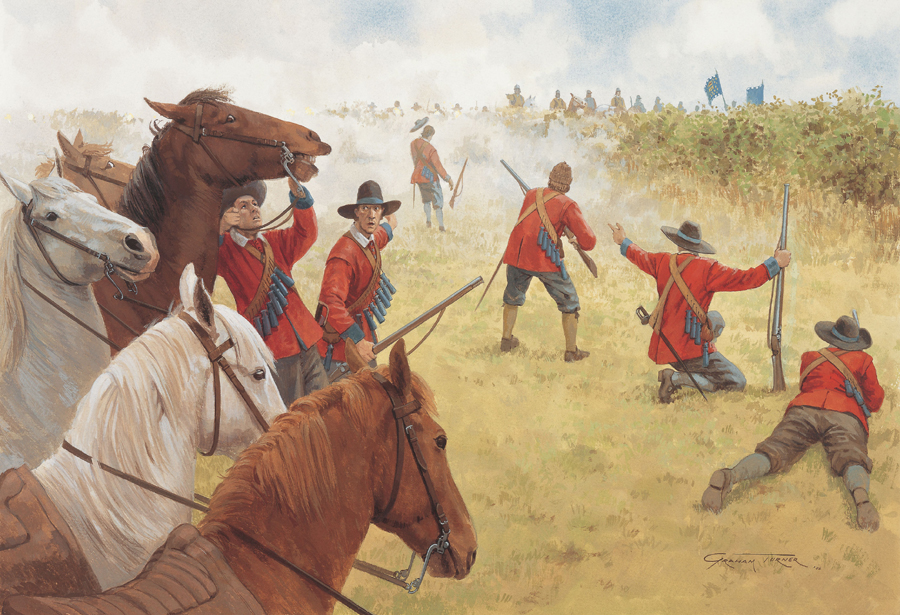
Okey’s Dragoons courtesy of Osprey Publishing
Before any pitched battle, the Dragoons would have been worked hard, joining raids on enemy strongholds and supply lines. Capturing and holding bridges, fords or crossing points at major rivers were also important during preparations for the coming fight. Dragoons could also find themselves on outpost duty, using their firelock or matchlock muskets to keep the enemy at bay. They were also the perfect troop type to escort wagons, prisoners or guarding anything else thought valuable.
Come the glorious day of battle however, the Dragoon could come into his own. Never as well paid or equipped as their comrades in arms in the cavalry, and most likely despised by the footsloggers, the Dragoon had a job to do nevertheless. Most commonly, it would be dangerous work, joining Forlorn Hope parties, guarding the flanks and rear of the army. They were sent forward to clear woods, ditches and hedges of enemy musketeers and opposing dragoons. Often the Dragoons would move forward smartly and then dismount to fight, forming regular musket blocks on the field and responding to drum calls as would any infantry of the time.
In the heat of battle, their horses would be sent to the rear, along with one in four of the men. These troops would ensure the horses were sheltered from fire and prepared for swift mount up, whether to retreat or redeploy on the battlefield.
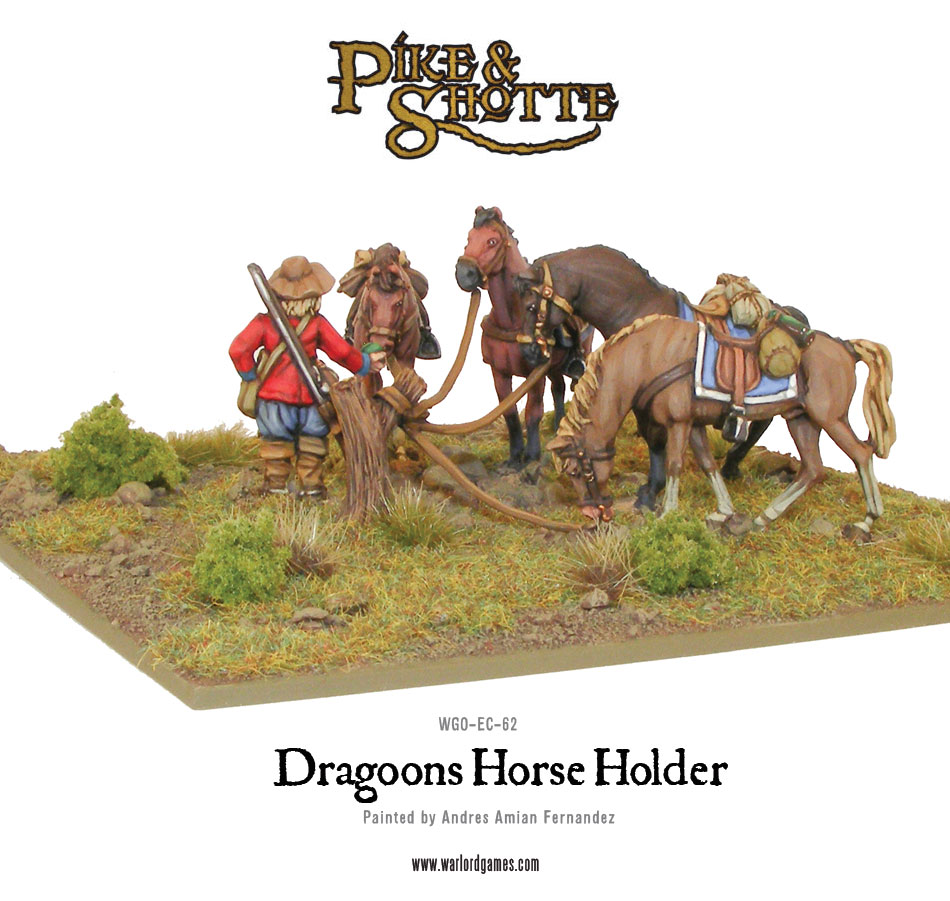
Firing from the saddle was attempted, indeed even trained for, but it is difficult to imagine this being of any real worth in the field. Hand-to-hand combat was not seen as a major role for a Dragoon, however Colonel Okey and his New Model Army regiment bucked this tradition. At Naseby, Okey’s Dragoons famously charged, sword and carbine in hand, to help destroy a collapsing Royalist army.
